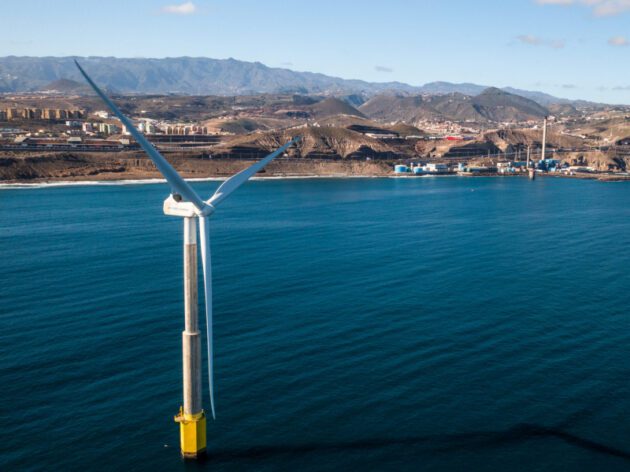
Spain launches pioneering combined hydrogen and floating offshore wind project off the coast of the Canary Islands

By Anders Lorenzen
Floating offshore wind farms as well as green hydrogen are widely tipped to become the next frontier for energy companies and countries, as they seek to ramp up clean energy capacity and create an alternative to gas when it comes to heating needs.
In April, Spain announced a pioneering Hydrogen to Heat (H2Heat) project which would utilise floating offshore wind to produce green hydrogen.
A test case for combining offshore wind with hydrogen
The architects of the H2Heat project which is located offshore in the Canary Islands, the Spanish territory off the coast of west Africa, says it is being developed to demonstrate green hydrogen production from offshore wind for heating.
The project is being developed by a multidisciplinary consortium led by the Oceanic Platform of the Canary Islands (PLOCAN), and is aimed to demonstrate the complete value chain of green heating with hydrogen in a commercial setting.
It intends to use renewable energy from Esteyco’s 5MW Elican offshore wind facility to produce green hydrogen using a high efficiency electrolysis unit at the PLOCAN site on Gran Canaria
The green hydrogen and oxygen produced will then be delivered to the Canary Health Service for heating at a local hospital complex.
Over time, with the development of a replicable model, Canary Health Services hopes to extend the approach to all its hospitals to help meet its net zero health strategy.
The project, due to formally get under way this month, has a duration of five years and a total budget of €13 million, of which €10 million is being provided by the European Union from the Horizon Europe scheme.
The Elican wind turbine was developed with earlier EU support to demonstrate a new structure with a self-erecting telescopic tower for deep offshore wind. With the lowered centre of gravity of the tower, the proposal is that it can be floated to the offshore site and there ballasted to rest on the seabed, lowering the cost and complexity of the process.
The other innovation, still in its infancy, is the maritime production of green hydrogen, in this case not actually at sea but nevertheless within the marine environment.